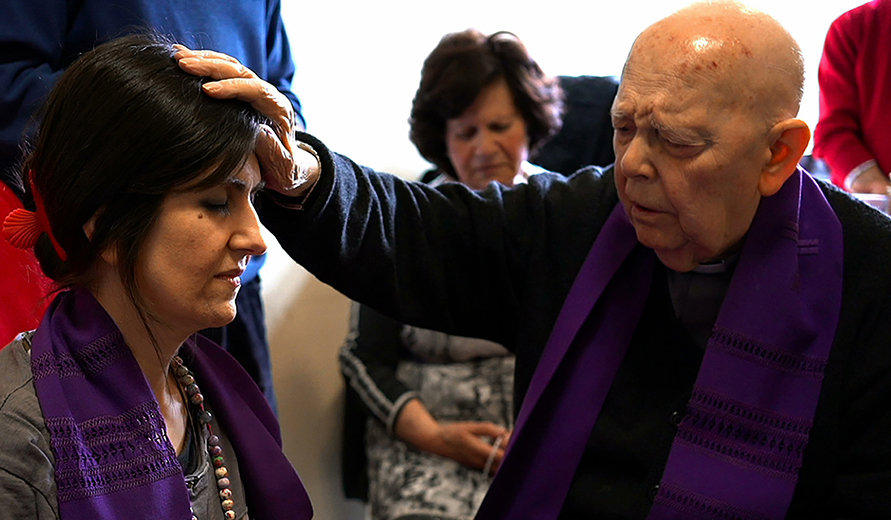The Catechism of the Catholic Church says the following about exorcism and makes some distinctions: “When the Church asks publicly and authoritatively in the name of Jesus Christ that a person or object be protected against the power of the Evil One and withdrawn from his dominion, it is called exorcism. Jesus performed exorcisms and from him the Church has received the power and office of exorcizing. In a simple form, exorcism is performed at the celebration of Baptism. The solemn exorcism, called ‘a major exorcism,’ can be performed only by a priest and with the permission of the bishop. The priest must proceed with prudence, strictly observing the rules established by the Church…. Before an exorcism is performed, it is important to ascertain that one is dealing with the presence of the Evil One, and not an illness” (No. 1673). Thus a distinction is made between solemn (or a major) exorcism and minor exorcisms associated with sacraments and blessings. A major exorcism is performed only for one, who is demonstrably possessed by a demon or demons, and may only be performed by a priest the bishop has specially permitted to do so.
Demonologists distinguish three levels of demonic incursion. First, there is temptation, and this we all experience. Second, there is obsession (sometimes called oppression), when demons torment people physically, spiritually, mentally or emotionally, or some combination of these. Third, there is possession, wherein demons take physical possession of a person’s body and make use of its faculties. Possession is usually intermittent, almost never an uninterrupted possessing of the person’s body.
For those struggling with oppression, prayers of minor exorcism can be used. The priest can speak these prayers extemporaneously. A layperson trained in deliverance ministry can also pray. Priests are also able to offer prayers from the “Manual of Minor Exorcisms: For the Use of Priests.”
In the rarer case of full possession, the Rite of Major Exorcism is used. Again, only a priest given explicit permission by the bishop may use this rite.
In most dioceses there is an appointed exorcist whose first task is to consider cases properly presented to him and assess if there is in fact possession. He must reach a moral certitude that the symptoms are not caused by mental illness or other natural causes, and that the symptoms are not merely oppression or temptation.
He does this by interviewing and examining the background of the aggrieved person and by the use of certain diagnostic prayers meant to disclose the presence of demons. He looks for certain specific criteria, which the Church has designated from long experience, as signs of possession. If some or all the designated signs are observed, and if mental or physical illness are ruled out as central causes, the exorcist then seeks permission from the bishop to perform the Rite of Major Exorcism.
In the rite he is expected to have an assisting priest and other laypersons to help in case there is violent reaction or the need for other assistance. If the possessed is a woman, at least one other woman should be present for the session. Some exorcisms extend over many months and even for more than a year in difficult cases of high-ranking demons. To some extent, your observation that exorcisms are more frequent today is true.
The Church, especially in America, had moved away from the practice beginning in the 1970s, considering it more a matter for psychiatric care. In recent years, Roman officials encouraged American bishops to prudentially move to appointing more exorcists and allowing the faithful more recourse for assessment regarding possible possession. The Rite of Exorcism was also revised and reissued. All this has led to a moderate increase in the numbers of exorcism and the requests for evaluation.
Those who practice deliverance ministry, to include the ministry of formal exorcism, are quite aware that demons often interact with a host of spiritual, emotional and mental struggles in people’s lives. Deliverance ministry often involves a lengthy and multifaceted approach which includes deliverance prayers (and more rarely the prayers of major exorcism), along with the sacraments, spiritual direction and in some cases psychotherapy and psychiatric interventions.
Thus those who seek deliverance ministry (to include exorcism) must seek to grow in faith in the power of the sacraments and of the steady growth in the spiritual life. All of us must lay hold of the truth that Jesus Christ is more powerful than any demon, including Satan himself, and not give way to exaggerated or superstitious fears.
Rev. Msgr. Charles E. Pope is a priest of the Archdicoese of Washington, D.C.

